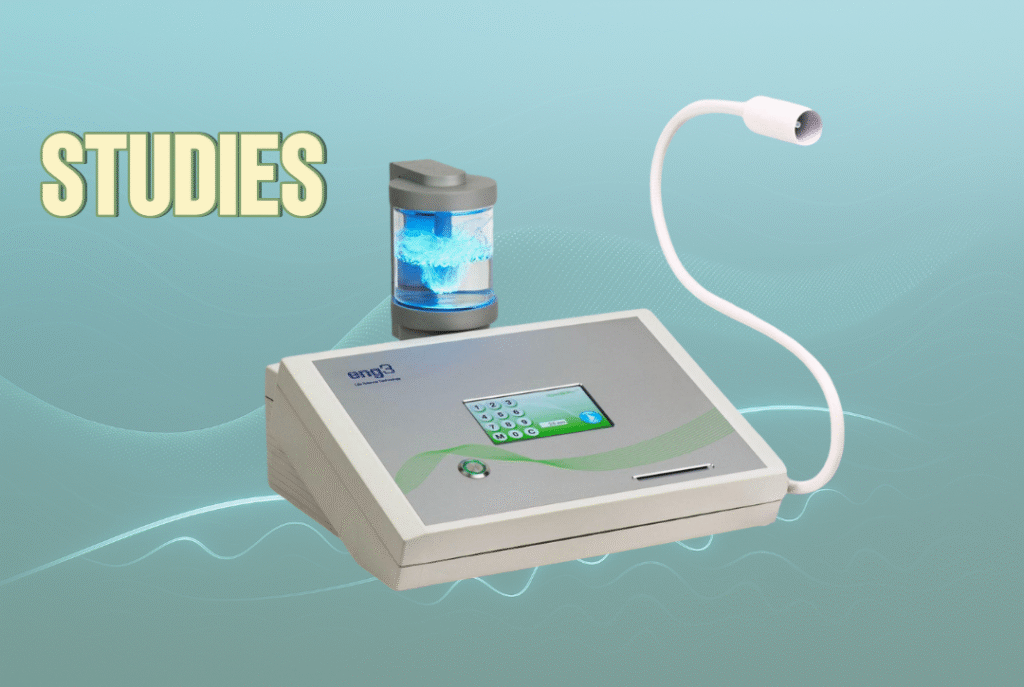How IR-treated microdroplets can change the nature of water and bring it closer to ‘exclusion zone’ behavior
Water is perhaps the most familiar and yet most mysterious substance on Earth. While its chemical formula is simple H₂O its behavior in various physical conditions remains an active area of scientific inquiry. A recent study by Yablonskaya et al., published in Water (2021), explores a particularly novel method of water treatment: using humid air activated by infrared (IR) radiation to induce significant physicochemical changes in aqueous solutions.
What Happens When Humid Air Meets Infrared Light?
The researchers focused on a unique treatment process where ambient air is first humidified using distilled water and then exposed to infrared radiation. This IR-activated humid air — referred to as CoHu (Conditioned Humid air) — is then used to treat bulk water samples and buffer solutions.
Using a device called the NanoVi Exo (developed by Eng3 Corporation), humid air with microdroplets ranging from 1–10 micrometers is passed through an infrared excitation unit. Inside this unit, 24 infrared-emitting LEDs deliver energy at a wavelength of approximately 4000 nm. As the humid air flows through a quartz tube, the water vapor within it absorbs this energy, becoming “conditioned” in the process.
Key Findings: Mimicking Exclusion Zone (EZ) Water
The study revealed that water samples treated with CoHu showed several notable changes:
-
Redox potential decreased: indicating a shift toward a more reduced (electron-rich) state.
-
Surface tension dropped: suggesting the development of structural heterogeneity in the water.
-
Dielectric constant increased: a potential sign of altered molecular alignment or charge distribution.
Interestingly, buffer solutions (such as carbonate or phosphate buffers) treated with CoHu demonstrated improved resistance to acidification and ion leaching — indicating enhanced buffering capacity.
These changes were not observed in water samples treated with non-irradiated humid air, underlining the specific role of IR-activation in driving the observed effects.
Implications: Water as a Responsive Medium
The researchers draw a compelling parallel between the treated water and so-called exclusion zone (EZ) water, a structured form of water first described by Gerald Pollack and others. EZ water is characterized by a negatively charged, highly ordered structure that excludes solutes and behaves differently than bulk water.
Several features of the CoHu-treated water mimic those of EZ water, including:
-
Altered redox potential
-
Increased dielectric constant
-
Improved buffering (linked to charge separation)
-
Surface heterogeneity, reminiscent of dissipative structures in open systems
The authors suggest that infrared radiation imparts a physical signal to the microdroplets in humid air, which in turn reorganizes water structure when the air interacts with aqueous systems. This is a form of non-chemical intervention — where the treatment does not add new substances to the water, but changes its properties via energy transfer.
A Glimpse Into the Future?
This study opens a fascinating window into the potential of energy-based water treatment. Whether in agriculture, medicine, or materials science, understanding and harnessing water’s responsiveness to physical stimuli like IR radiation could have far-reaching implications.
While more research is needed to fully understand the underlying mechanisms, this work lays the groundwork for new explorations in structured water and energy-based environmental treatments.
